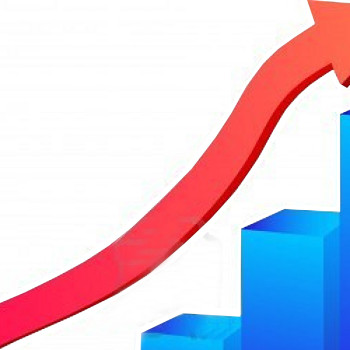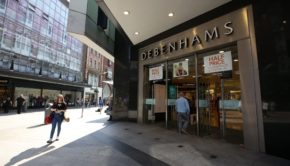Glass half-full for retailers

After seven years of virtually continuous falls, retail sales finally seem to be rising once again. However, with a significant proportion of sales having migrated permanently online and prices still falling in many categories, there will be no return to the “good old days” any time soon, writes Dan White
11 December 2014
The value of retail sales rose by 3.2% in the 12 months to October, according to the latest CSO figures. Even when one excludes volatile motor sales from the mix, the value of retail sales still rose by a not insignificant 2.1%.
While we will have to wait for the key Christmas figures before coming to a final judgment, 2014 is already shaping up to be the best year for retailers since 2007.
And for that let us all be truly grateful. With the probable exception of construction, no sector of the domestic economy has been worse hit by the post-Celtic Tiger downturn than retailing. The value of retail sales collapsed by over a quarter from their 2007 peak.
Carnage for retailers
At the same time many retailers were trapped in leases with upward-only rent reviews. The result was carnage. A slew of leading retailers were forced into receivership and/or examinership or, in some cases, disappeared altogether. The casualty list was a long one and included Xtra-Vision, Superquinn, O’Brien’s Sandwiches, Woodies, B&Q, A-Wear and, most recently, Karen Millen.
The fallout in the shopping centres and on the main streets cost an estimated 50,000 retail workers their jobs and has decimated the government’s VAT revenues.
But surely that was then and this is now. With sales recovering surely Irish retailers can now put the traumatic memory of the past seven years behind them.
Caution
While I would hate to spoil the festive cheer, some caution is still called for. With the exception of prices resulting from higher government taxes and charges, the Irish economy has now entered a period of deflation.
Although the latest figures from the CSO show average prices barely rising by 0.2% in the 12 months to October, a different picture emerges when the detailed price data is analysed. While the price of education rose by 4.8% and alcoholic beverages and tobacco by 3.9%, clothing and footwear prices fell by 4.9%, food prices by 2.7%, while furniture and household equipment prices dropped by 2.6%.
This deflation is feeding directly into the retail sales figures. Retailers have had to cut their average prices by about 2.5%, in order to boost the value of their sales.
Dip in confidence
Consumer confidence also remains negative. After improving for most of 2014, the KBC/ESRI index of consumer confidence dipped sharply in October and didn’t rebound in November. This almost certainly reflects frustration on the part of many consumers that they are not benefitting from the economic recovery.
The anti-water charges were not good news for retailers as they reinforced the widespread perception that any gains from the tax cuts in last October’s budget would be more than cancelled out by the introduction of water charges from the beginning of 2015. While the government’s partial climb down will mitigate the financial impact of water charges on most households, the damage which they have inflicted on consumer confidence could take longer to heal.
Online competition
And then there is online shopping. There is widespread concern that the CSO retail sales figures don’t adequately reflect the value of internet sales. A survey last October by internet shopping service Nightline guesstimated that the value of Irish online shopping could be as high as €2.4bn annually. While this figure, the equivalent of about 15% of all retail sales, strikes me as being a bit on the high side, there is little doubt but that online shopping now represents a substantial proportion of total retail sales.
While some of these online sales have been captured by the traditional retailers’ own websites, many of them have gone to exclusively online retailers such as Amazon. Not alone are those sales not coming back, no matter how strongly the economy recovers, it’s certain that an ever-increasing proportion of retail sales will migrate online in the years ahead.
This represents a potentially existential threat for many retailers, particularly those selling non-perishable goods. Devising a strategy that allows them to compete online, while still remaining competitive in their traditional stores, represents by far the greatest challenge confronting most retailers over the next few years.
Those retailers that get it right have at least the chance of surviving in the digital era, those that don’t will be consigned to the history books.
Click and collect
Already the possible outline of the retailer of the future is emerging. Not alone will they do an increasing proportion of their business online, either delivering online orders directly to the customer or “click and collect”, where the customer collects his or her online order from their nearest store, those stores will increasingly come to resemble “walk-in catalogues” rather than traditional stores.
The customer will visit the store, sample the merchandise being offered for sale and then either purchase it immediately at the store, or later on-line. Increasingly it will not be case of either online or off-line but a hybrid incorporating elements of both.
What does this mean for Irish retailers still struggling to recover from the after-effects of the worst economic downturn for more than 80 years?
No going back
The first thing to bear in mind is that the pre-2008 boom time years are gone forever. There will be no going back to the Celtic Tiger even if the economy fully recovers. For retailers the “new normal” is going to be one of increased competition – both online and off-line, constant margin pressure and continuing customer nervousness.
Some retailers will rise to meet this challenge. Others won’t and will fall by the wayside. However, the good news is that with sales finally rising once again, traditional off-line retailers have at least a fighting chance. The glass is at least half-full rather than half-empty.
Happy Christmas and a prosperous New Year.



 Print
Print






Fans 0
Followers